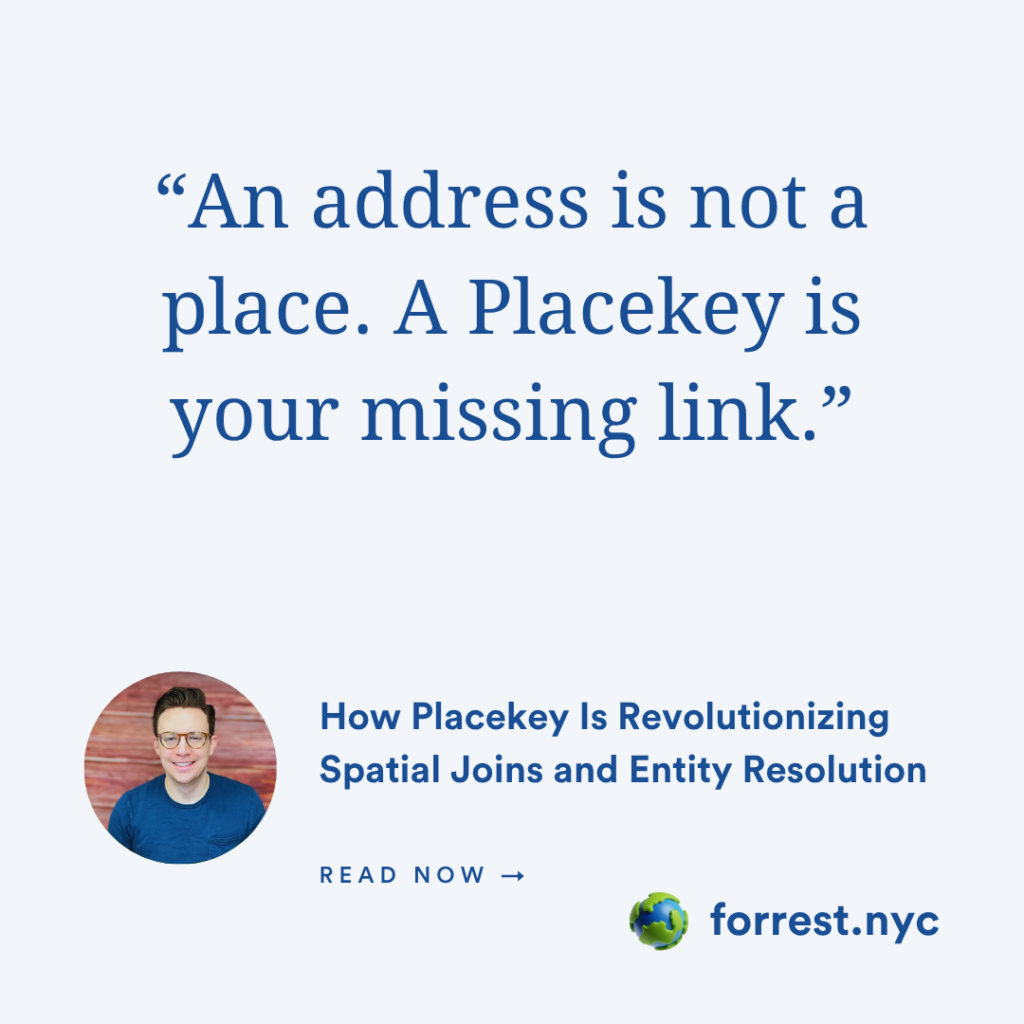How Placekey Is Revolutionizing Spatial Joins and Entity Resolution

If you’ve ever tried to merge location data from different sources, you’ve probably run into the same nightmare I have: mismatched formats, duplicate addresses, missing POIs, and enough edge cases to make your head spin.
This is why I was excited to sit down with Hayden Mortimer, president of Placekey, on the latest episode of the Spatial Stack podcast. We dug into the messy underbelly of location data and explored why your address fields alone just aren’t cutting it anymore—and what a universal place ID can unlock instead.
The Pain We All Know Too Well
Merging datasets by address is fragile. One dataset spells “Street,” another uses “St,” a third lists “Suite 3” while another skips it entirely. Human error, formatting differences, and inconsistent standards make even simple joins an exercise in frustration. And that’s before you try to match something like a Starbucks in a multi-tenant building.
The core insight Hayden shared? Placekey doesn’t just normalize addresses, it replaces them. It offers an open, persistent ID that connects places, not just strings of text. That changes everything.
One Key, Many Doors
Placekey started as an internal solution at SafeGraph to solve their own conflation issues. But what made it compelling was that it worked across vendors, formats, and geographies. When the pandemic hit, researchers used Placekey to join mobility data with POI data to track disease spread. Today, the tool is free to use at small scale and actively being integrated into massive enterprise workflows.
And this part is key: Placekey is not trying to be another proprietary ID. You don’t need to license it, you don’t need to use specific tools, and once you’ve generated a key, it’s yours. Forever.
From Local Projects to Global Use Cases
What stood out most from our conversation was the breadth of use cases Placekey enables:
- A local real estate analyst joining sales, tax, crime, and climate risk data by address—without having to standardize anything.
- A consumer goods company deduping messy OCR’d sales receipts across thousands of stores to power their BI dashboards.
- An ISP deciding where to lay fiber by combining weather, traffic, demographic, and building-level data—seamlessly.
In short, Placekey isn’t just a cleaner join—it’s an accelerator. By skipping the tedious cleanup step, you can spend your time on what actually matters: insight.
A Personal Take
But more than anything, Placekey is a reminder that small abstractions, like a well-designed ID, can have massive downstream impact. They don’t always make flashy headlines, but they make everything else faster, cheaper, and more scalable.
And isn’t that what we want out of modern geospatial work?
Want to Try It?
You can sign up at placekey.io and start with 10,000 free requests a day. If you’re working with public data, they’ll even process it for free.
Let’s stop wasting time wrangling addresses and start building smarter, faster, and more connected spatial products.
